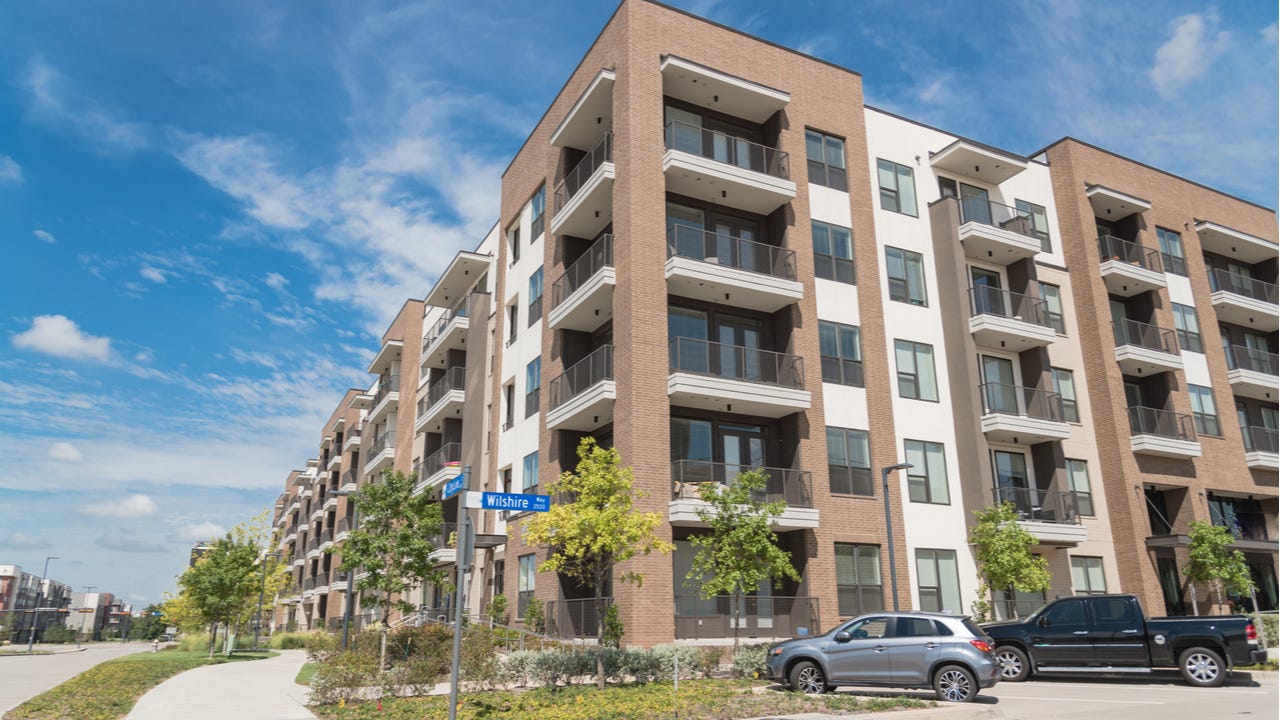How to buy a house with low income

Key takeaways
- A low income doesn’t necessarily mean you can’t buy a home. There are many other factors that go into qualifying for a mortgage, including your credit score and debt.
- Many types of mortgages are designed for lower- to moderate-income borrowers, including some conventional loans that only require a 3 percent down payment.
- Your loan officer can help you prequalify for a loan and understand ways to strengthen your mortgage application, even with low income.
If you have a stable job but earn less than you’d like, you might be wondering whether you’d be able to afford a home. While you do need sufficient income to qualify for a mortgage, your earnings are just one piece mortgage lenders consider. There are also several mortgage programs that are specifically geared toward lower-income borrowers.
Can I buy a house with low income?
Yes, you can buy a house with low income, provided you can reasonably afford the mortgage, maintenance and other expenses associated with owning a home.
When you apply for a mortgage, the bank or lender evaluates your debt-to-income (DTI) ratio, a key measure of how your income stacks up against your mortgage and other debt payments. If you have a lower income, your DTI ratio could run higher — but that doesn’t always mean you won’t qualify.
Keep in mind, however: While low income doesn’t preclude you from homeownership, it can prevent you from buying the right home for your needs in terms of size, location or cost.
How to buy a house with low income
Buying a home involves several steps, from budgeting — especially so on a lower income — to getting preapproved, making offers and moving through to closing. Here’s an overview and tips.
1. Understand your current financial situation. Knowing the facts about your finances can help you plan for buying a home. Understand your current DTI, credit score and how much you already have saved for a down payment and closing costs, as well as how much you can reasonably afford to spend on a monthly mortgage payment. Our How Much House Can I Afford? calculator can help.
2. Work on your credit score. Your credit score is one of the biggest factors in determining your mortgage rate, so the higher your score, the lower your monthly mortgage payment. Improving your score takes time, so check your reports and score as soon as possible to get a plan in place. Do your best to pay bills on time and avoid opening new lines of credit. In addition, look for any errors (such as incorrect contact information) on your reports. If you spot any inaccuracies, contact the credit bureau to get things resolved.
3. Connect early with a loan officer. Even if you’re not ready to buy a home yet, get in touch with a few loan officers to learn exactly what you’d need to qualify. The loan officer can help you understand the lender’s credit score, DTI ratio and other requirements, as well as fees. The loan officer could also prequalify you so you’ll know how much you can afford.
4. Shop for a lender and get preapproved. Compare mortgage offers and rates from at least three mortgage lenders. When you’re ready to start shopping for homes, get preapproved for a loan. You’ll need a preapproval to make offers.
5. Find a home and apply for the mortgage. Once a seller accepts your offer, submit the purchase agreement to your lender. It’ll then move your loan through the underwriting process, which includes an appraisal and verification of your employment and income. This can take time, during which your lender might require you to send additional or copies of documents.
6. Close. Once your loan is cleared to close, you’ll prepare to pay closing costs and move to your new home.
Lower-income mortgage programs
There are several mortgage programs tailored to lower- and moderate-income borrowers. Some of these offer more leeway with income, but still impose certain requirements.
HomeReady mortgage
Fannie Mae’s HomeReady mortgage program addresses one of the challenges of buying a home with a low income by requiring just 3 percent of the home’s price as a down payment. With this loan, your down payment and closing cost funds can come from other sources beyond savings, including grants and gifts, and you don’t need to contribute any of the money personally.
To qualify, your income can’t exceed 80 percent of the area median income (AMI) for the location where you’re buying a home. (You can look up local limits using Fannie Mae’s tool.)
While you can put down as little as 3 percent with a HomeReady mortgage, you’ll need to pay for private mortgage insurance (PMI) until you attain 20 percent equity. You’ll pay the mortgage insurance with your monthly mortgage payment, which will add to that cost.
In addition, you can add a co-borrower to a HomeReady mortgage, even if that person isn’t planning on living in the home.
“Unlike other home loans, all borrowers do not have to reside in the property,” says Roselina D’Annucci, a New York–based real estate attorney with the Law Offices of Serrano and Associates, P.C. “For example, parents who won’t be living in the home can be co-borrowers on the loan to help their children qualify for a mortgage.”
With a HomeReady mortgage, your mortgage lender can also consider your rent payment history to help qualify you for the loan, D’Annucci says.
Home Possible and HomeOne mortgages
Like a HomeReady mortgage, Freddie Mac’s Home Possible and HomeOne mortgages require just 3 percent down. The down payment funds can come from many sources, including family members, employer-assistance programs and even sweat equity (if you have the skills to provide labor or materials to renovate the home, that is).
Unlike HomeReady and Home Possible, a HomeOne mortgage does not have income or geographic requirements to qualify, but you will need to pay for mortgage insurance if you put down less than 20 percent.
“There are a few other strings attached, too: If you are a first-time buyer, you will be required to go through a homeownership education program,” says Tabitha Mazzara, director of Operations at MBANC, a mortgage lender.
The first-time buyer class requirement also applies to the HomeReady program.
FHA loan
You can get an FHA loan, which is insured by the Federal Housing Administration, for as little as 3.5 percent down if your credit score is 580 or higher.
“This loan has less stringent requirements that can help low-income borrowers or those with poor credit histories,” says Gerwin Wallace, a mortgage loan originator with Silverton Mortgage in Anniston, Alabama. “You may pay lower closing costs with this loan, as well.”
If your down payment is less than 10 percent, however, FHA loans come with lifetime mortgage insurance (in other words, it can’t be canceled). The home you want to buy must also pass an appraisal to ensure it meets FHA safety guidelines.
VA loan
VA loans are available to eligible active-duty service members, veterans and surviving spouses. With this type of loan, you don’t have to put any money down (in most cases) or pay for mortgage insurance, the closing costs might be less than what other loans might incur and you could get a lower interest rate than you would with other financing options.
In addition, the VA loan is a lifetime benefit; that means if you’re eligible, you can get a VA loan multiple times.
However, you’ll need to pay a funding fee for this mortgage, the amount of which depends on whether you’ve gotten a VA loan before and how much down payment you’re making, if any. This is an additional cost to consider.
To qualify for a VA loan, “you must have good credit, a steady income and a Certificate of Eligibility from the VA,” Mazzara says. “Also, your loan amount must not exceed the appraised value of the house.”
USDA loan
Similar to a VA loan, a USDA loan doesn’t require a down payment, but the home must be located in an eligible rural area, which means you might only qualify if you’re buying far from a city — although many suburban areas are also eligible for USDA financing, according to Wallace.
Also, your income can’t exceed 115 percent of the AMI, and you’ll pay mortgage insurance with this loan, too, in the form of an upfront guarantee fee and annual fees.
Good Neighbor Next Door program
Good Neighbor Next Door is a homebuying program available to law enforcement officers, teachers, firefighters and emergency medical technicians. The program, administered by the U.S. Department of Housing and Urban Development (HUD), allows borrowers to buy a home for 50 percent off list price in exchange for living in the property for at least three years.
However, the home has to be a property in a HUD-determined “revitalization area” and listed for sale through the program, and the listings are only available for purchase for seven days. You’ll also need to get a second mortgage and note to qualify for the discount — but you won’t be on the hook for the second mortgage or any interest on it, so long as you fulfill the three-year residency requirement.
HFA loan
Not to be confused with an FHA loan, an HFA loan is another type of low-income mortgage through Fannie Mae (called “HFA Preferred”) and Freddie Mac (called “HFA Advantage”) that requires only 3 percent down. HFA loans are available through state housing finance agencies (HFAs), which partner with mortgage lenders to offer affordable loans to lower-income borrowers. In many cases, you don’t have to be a first-time buyer to qualify, and you might get down payment assistance, as well.
State and local down payment assistance programs
There are a variety of local down payment assistance (DPA) programs, and they are typically geared toward lower- to moderate-income borrowers. These programs usually come in the form of a grant or loan, the latter of which might need to be repaid or could be eligible for forgiveness after a certain amount of time.
Mortgage credit certificate
A mortgage credit certificate (MCC) is a federal tax credit that can help low- and moderate-income or first-time buyers offset some of the money they owe in mortgage interest. Unlike a tax deduction, MCCs offer a dollar-for-dollar tax credit of up to $2,000 to those eligible annually. An MCC isn’t free, however, so if you qualify, consult with a tax professional to learn if this is the right move for you. Often, the savings over a 30-year mortgage exceed the upfront fee.
Manufactured and mobile home loans
If you’re interested in a manufactured or mobile home, you might qualify for special financing specifically for lower-income buyers.
“For example, MH Advantage is a Fannie Mae loan program designed to finance manufactured homes,” Wallace says. “It features low down payment options, low monthly payments and reduced interest rates compared to most standard loans for manufactured homes. Also, it offers the ability to combine HomeReady, HFA Preferred mortgage and other mortgage programs without being tied to any one specific program.”
You may also like

How to sell a house by owner in Minnesota

How to buy a house for sale by owner







